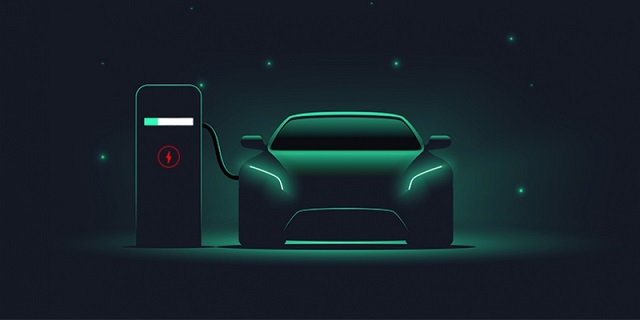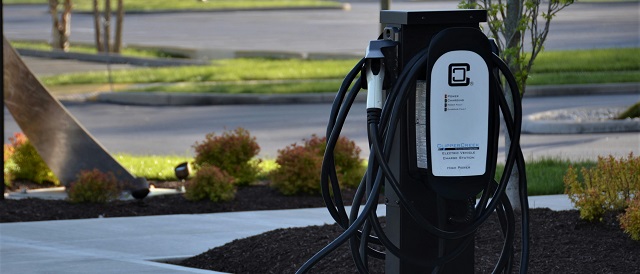Automotive
Can Metal Mining Match the Speed of the Planned Electric Vehicle Transition?

From the Fraser Institute
The governments of Canada, the United States, and many other nations are mandating a shift in vehicle technology: away from vehicles powered primarily by internal combustion engines, and toward vehicles powered primarily with electricity stored on board in batteries.
Canada’s government has established policies designed to push automakers to achieve the government’s goal of having 35 percent of all new medium- and heavy-duty vehicle sales be electric by 2030, rising to 100 percent of all new medium- and heavy-duty vehicle sales being electric by 2040.
The US has set a target requiring 50 percent of all new passenger cars and light trucks sold in 2030 be electric, or largely electric hybrid vehicles. These timelines are ambitious, calling for a major expansion of the prevalence of electric vehicles (EVs) in the major vehicle classes in a very short time—only 7 to 10 years.
Barring breakthrough developments in battery technology, this massive and rapid expansion of battery-electric vehicle production will require a correspondingly massive and rapid expansion of the mining and refining of the metals and rare earth elements critical to battery-electric vehicle technology.
The International Energy Agency (IEA) suggests that to meet international EV adoption pledges, the world will need 50 new lithium mines by 2030, along with 60 new nickel mines, and 17 new cobalt mines. The materials needed for cathode production will require 50 more new mines, and anode materials another 40. The battery cells will require 90 new mines, and EVs themselves another 81. In total, this adds up to 388 new mines. For context, as of 2021, there were only 270 metal mines operating across the US, and only 70 in Canada. If Canada and the US wish to have internal supply chains for these vital EV metals, they have a lot of mines to establish in a very short period.
Historically, however, mining and refining facilities are both slow to develop and are highly uncertain endeavors plagued by regulatory uncertainty and by environmental and regulatory barriers. Lithium production timelines, for example, are approximately 6 to 9 years, while production timelines (from application to production) for nickel are approximately 13 to 18 years, according to the IEA.
The establishment of aggressive and short-term EV adoption goals sets up a potential conflict with metal and mineral production, which is historically characterized by long lead-times and long production timelines. The risk that mineral and mining production will fall short of projected demand is significant, and could greatly affect the success of various governments’ plans for EV transition.
Author:
Automotive
Electric vehicle mandates mean misery all around

From the Fraser Institute
By Matthew Lau
The latest news of slowing demand for electric vehicles highlight the profound hazards of the federal government’s Soviet-style mandate that 100 per cent of new light-duty vehicles sold must be electric or plug-in hybrid by 2035 (with interim targets of 20 per cent by 2026 and 60 per cent by 2030, with steep penalties for dealers missing these targets).
The targets were wild to begin with—as Manhattan Institute senior fellow Mark P. Mills observed, bans on conventional vehicles and mandated switches to electric mean, in jurisdictions such as Canada, “consumers will need to adopt EVs at a scale and velocity 10 times greater and faster than the introduction of any new model of car in history.”
Indeed, when the Trudeau government announced its mandate last December, conventional vehicles accounted for 87 per cent of the market, and today the mandated switch to electric looks even more at odds with actual consumer preferences. According to reports, Tesla will cut its global workforce by more than 10 per cent (or more than 14,000 employees) due to slowing electric vehicle demand.
In Canada, a Financial Post headline reads, “‘Tall order to ask the average Canadian’: EVs are twice as hard to sell today.” Not only has Tesla’s quarterly sales declined, Ford Motor Co. announced in April it will delay the start of electric vehicle production at its Oakville plant by two years, from 2025 to 2027.
According to research from global data and analytics firm J.D. Power, it now takes 55 days to sell an electric vehicle in Canada, up from 22 days in the first quarter of 2023 and longer than the 51 days it takes a gasoline-powered car to sell. This is the result, some analysts suggest, of a lack of desirable models and high consumer prices—and despite federal subsidies to car buyers of up to $5,000 per electric vehicle and additional government subsidies in six provinces, as high as $7,000 in Quebec.
Similarly in the United States, the Wall Street Journal reports that on average, electric vehicles and plug-in hybrids sit in dealer lots longer than gasoline-powered cars and hybrids. Again, that’s despite heavy government pressure to switch to electric—the Biden administration mandated two-thirds of new vehicles sold must be electric by 2032.
In both Canada and the U.S., politicians banning consumers from buying vehicles they want and instead forcing them to buy the types of vehicles that run contrary to their preferences, call to mind famed philosopher Adam Smith’s “man of system,” described in his 1759 book, The Theory of Moral Sentiments.
The man of system, Smith explained, “is apt to be very wise in his own conceit” and “seems to imagine that he can arrange the different members of a great society with as much ease as the hand arranges the different pieces upon a chess–board.” But people are not chess pieces to be moved around by a hand from above; they have their own agency and if pushed by the “man of system” in a direction opposite to where they want to go, the result will be misery and “society must be at all times in the highest degree of disorder.”
That nicely sums up the current government effort to mandate electric vehicles contrary to consumer preferences. The vehicle market is in a state of disorder as the government tries to force people to buy the types of cars many of them do not want, and the outcomes are miserable all around.
Author:
Automotive
New Analysis Shows Just How Bad Electric Trucks Are For Business

 From the Daily Caller News Foundation
From the Daily Caller News Foundation
By WILL KESSLER
Converting America’s medium- and heavy-duty trucks to electric vehicles (EV) in accordance with goals from the Biden administration would add massive costs to commercial trucking, according to a new analysis released Wednesday.
The cost to switch over to light-duty EVs like a transit van would equate to a 5% increase in costs per year while switching over medium- and heavy-duty trucks would add up to 114% in costs per year to already struggling businesses, according to a report from transportation and logistics company Ryder Systems. The Biden administration, in an effort to facilitate a transition to EVs, finalized new emission standards in March that would require a huge number of heavy-duty vehicles to be electric or zero-emission by 2032 and has created a plan to roll out charging infrastructure across the country.
“There are specific applications where EV adoption makes sense today, but the use cases are still limited,” Karen Jones, executive vice president at Ryder, said in an accompanying press release. “Yet we’re facing regulations aimed at accelerating broader EV adoption when the technology and infrastructure are still developing. Until the gap in TCT for heavier-duty vehicles is narrowed or closed, we cannot expect many companies to make the transition, and, if required to convert in today’s market, we face more supply chain disruptions, transportation cost increases, and additional inflationary pressure.”
Due to the increase in costs for businesses, the potential inflationary impact on the entire economy per year is between 0.5% and 1%, according to the report. Inflation is already elevated, measuring 3.5% year-over-year in March, far from the Federal Reserve’s 2% target.
Increased expense projections differ by state, with class 8 heavy-duty trucks costing 94% more per year in California compared to traditional trucks, due largely to a 501% increase in equipment costs, while cost savings on fuel only amounted to 52%. In Georgia, costs would be 114% higher due to higher equipment costs, labor costs, a smaller payload capacity and more.
The EPA also recently finalized rules mandating that 67% of all light-duty vehicles sold after 2032 be electric or hybrid. Around $1 billion from the Inflation Reduction Act has already been designated to be used by subnational governments in the U.S. to replace some heavy-duty vehicles with EVs, like delivery trucks or school buses.
The Biden administration has also had trouble expanding EV charging infrastructure across the country, despite allotting $7.5 billion for chargers in 2021. Current charging infrastructure frequently has issues operating properly, adding to fears of “range anxiety,” where EV owners worry they will become stranded without a charger.
-

 John Stossel1 day ago
John Stossel1 day agoThe Swamp Survived: Why Trump Failed to “Drain the Swamp”
-

 Alberta2 days ago
Alberta2 days agoCanadian Christian chiropractor fights ‘illegal’ $65,000 fine for refusing to wear mask
-

 Media2 days ago
Media2 days agoCBC tries to hide senior executive bonuses
-

 COVID-191 day ago
COVID-191 day agoCOVID Is Over — But Did We Learn Anything From It?
-

 Energy1 day ago
Energy1 day agoU.S. EPA Unveils Carbon Dioxide Regulations That Could End Coal and Natural Gas Power Generation
-

 Automotive1 day ago
Automotive1 day agoNew Analysis Shows Just How Bad Electric Trucks Are For Business
-

 Environment1 day ago
Environment1 day agoScientific Report Pours Cold Water On Major Talking Point Of Climate Activists
-

 Education1 day ago
Education1 day agoSchools shouldn’t sacrifice student performance to vague notions of ‘equity’







